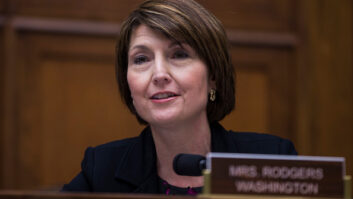Nielsen Audio and Katz Radio Group, one of the nation’s largest radio representation companies, are working together to conduct research on the local political media landscape during 2016 presidential primary season in an effort to showcase how radio is reaching voters in several states.
Over a 12-week period starting in February, the commissioned study — known as The Local Vote 2016 — is designed to capture current political viewpoints and voting preferences within 10 states to offer insights to political advertisers’ radio campaigns.
The first spate of data, covering three Super Tuesday states, Colorado, Texas and Virginia, found that roughly a third of all registered voters in those three states are open to influence from political messaging; the so-called “opportunity vote” that are either undecided on a candidate or have simply not yet decided if they will vote at all.
The research also found that radio leads all other media in reaching this opportunity vote in these three states, followed by broadcast television, cable TV, the Internet via computer and the Internet via mobile devices. The study found that one in three opportunity voters invest more time listening to radio than watching television, and on average, listen to nearly two hours of radio daily while watching less than one hour of TV.
The study also found that registered voters are five times more likely to agree that radio is an more of an appropriate place for political advertising than Pandora, and that multiple radio formats – not just news, talk or sports – offer a high density, political target audience for campaigns.
The states were selected based on the expectation that they will have high incidence of competitive races across several categories, the report said. In addition to Colorado, Texas and Virginia, also included were Florida, Illinois, Missouri, North Carolina, Ohio, Wisconsin and Pennsylvania.
Katz and Nielsen plan to release four reports over the 12-week period. The study draws upon Nielsen’s representative sample of local citizens who are currently part of the Scarborough Research Panel.
“[The] initiative was developed precisely for political advertisers who are seeking new insight into affecting voting outcomes at the local and national level,” said Stacey Schulman, executive vice president of strategy, analytics and research for Katz Media Group. “With $6 billion expected to be spent this election year, political campaigns will benefit from the ability to tie voter opinions close to the primary dates to a rich, respondent-level database of media behaviors.”










